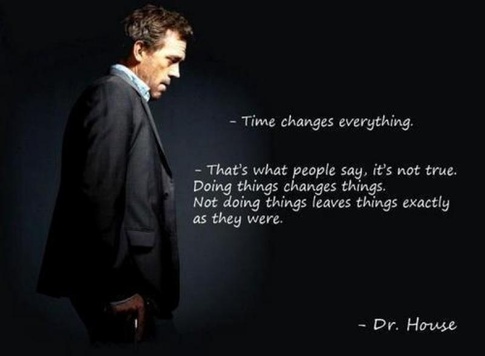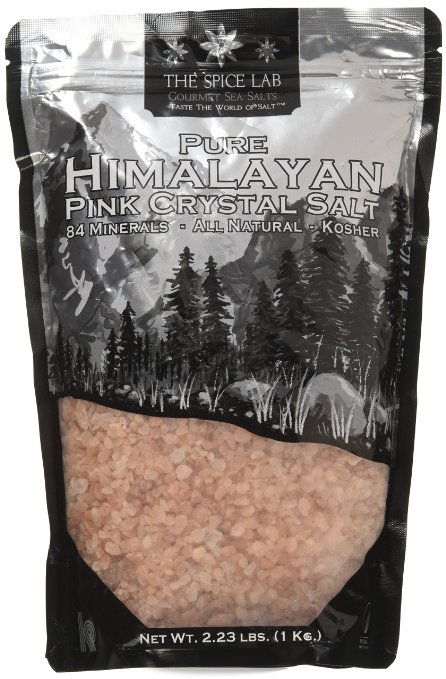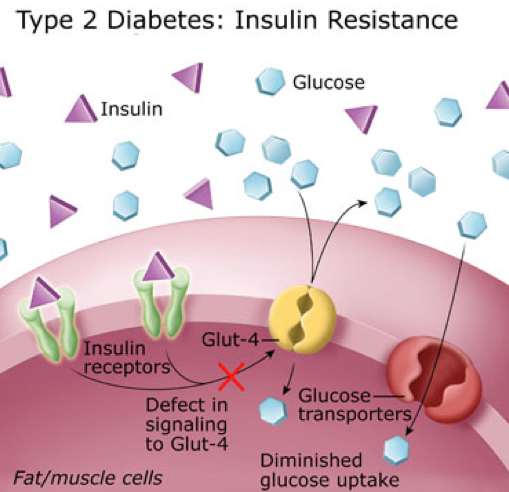No, it’s not sustainable at all. What do you think?

No, it’s not sustainable at all. What do you think?

Hypertension (elevated blood pressure) is one of the triad symptoms of metabolic syndrome. Most of the hypertension that I see clinically is driven by insulin resistance as  the underlying cause. I see this problem in a very large majority of the people in my office and I am seeing people younger and younger show up with continually increasing blood pressure.
the underlying cause. I see this problem in a very large majority of the people in my office and I am seeing people younger and younger show up with continually increasing blood pressure.
In medical school, we were taught to treat “borderline” or “slightly elevated blood pressure,” through “lifestyle changes” which was another way of saying exercise, caloric restriction & hold the salt. But most physicians today will tell you that exercise, salt & caloric restriction doesn’t work. When asked why the 34 year old male in my office suddenly has elevated blood pressure, the only explanation we had was it is a “genetic problem,” or “blood pressure naturally goes up as we get older,” or “you’ve been eating too much salt,” and they are started on blood pressure medication and sent on their way. But, as time went on, I found that I had to keep adding more and more blood pressure medication to control the continually rising blood pressure of the patients in my practice.
Most of these people will have a progressive elevation in blood pressure over time, and these blood pressure (anti-hypertensive) medications are/were continually raised until the person is on four or five different blood pressure pills at maximal doses. Again, when questioned why, their genetics are blamed and that is the end of it. Or is it?!
What shocked me was that when I took patients off of salt & caloric restriction, and placed them on low carbohydrate high fat diets (and yes, I gave them back their salt), their blood pressure normalized. I noticed that as their fasting insulin levels began to fall, their blood pressure began to return to normal.
What?! Blood pressure rise is caused by insulin?!
Ummm . . . Yes!
I am a prime example. During the first few years of my medical practice and reserve military service, we had routine vitals checkups. I was working out 3-5 days a week with weights and running 3-5 miles 2-3 times a week and restricting my calories to 1500 per day. So, I thought I was in pretty good shape. However, it was not uncommon for for the nurse to raise her eyebrows at my blood pressure readings in the 140-160 systolic and 85-98 range diastolic. “Oh, it’s the lack of sleep last night,” or “it’s the caffeine I had this morning,” would be my excuse. But I was making a lot of excuses, and in light of those excuses, my caloric restriction, exercise and salt restriction, I was also still gaining weight.

By the 5th year of my medical practice, I weighed 60 lbs heavier than I do today and I struggled to keep my blood pressure under 150/95. I was violating my own counsel . . . don’t trust a fat doctor for nutritional advise. (Or, was that advise from Dr.House?)

After cutting out the carbohydrates (I’ve kept my carbohydrate intake < 20 grams per day), moderating my protein intake and eating all the fat I am hungry for each day, my recent physical examination at the beginning of June 2016 revealed my blood pressure at 112/64. I don’t remember ever having blood pressure that low. And to be honest, I didn’t sleep well the night before my exam due to a number of middle of the night patient calls.

When I first started treating the insulin resistance problem in the human, rather than the blood pressure problem, I began to see immediate reductions in blood pressure within one to two weeks. So much of a reduction that if I didn’t warn the patient that they should  begin to back down their blood pressure medications, they would experience symptoms of dizziness, light-headedness, headache and a few patient’s nearly passing out. On a low-carbohydrate, high-fat (ketogenic) diet you need salt (sodium, potassium, & magnesium).
begin to back down their blood pressure medications, they would experience symptoms of dizziness, light-headedness, headache and a few patient’s nearly passing out. On a low-carbohydrate, high-fat (ketogenic) diet you need salt (sodium, potassium, & magnesium).
The process of burning fat as fuel causes you to lose increased amounts of sodium & potassium, and you have to replace these electrolytes. A number of my patients begin a low-carbohydrate, high-fat diet and are afraid of increasing their salt intake. Not replacing these electrolytes while on a ketogenic diet can also lead to low blood pressure, dehydrate and dizziness.
I often wondered why applying a ketogenic diet had such a profound effect on blood pressure so quickly. Dr. Robert Lustig helped answer that question for me.
In order to understand how the Standard American Diet (we call it the SAD diet in my office) raises your blood pressure, it is important to understand how the body processes the basic sugar molecule. Sugar is one glucose molecule bound to a fructose molecule. This is broken down in the body and 20% of the glucose is metabolized in the liver, the other 80% is sent on to be used as fuel throughout the body. Fructose, however, is where the problems arise. 100% of the fructose is metabolized in the liver, and the by product of fructose metabolism is increasing the liver’s production of MORE glucose and the byproduct of uric acid. Uric acid is produced and this inhibits the production of nitric oxide. The diminished nitric oxide in the presence of an increased level of glucose (stimulating increased insulin production due to eating starches) constricts the blood vessels and raises blood pressure. Yes, that donut you just ate raised your blood pressure for the next 12 hours. 
The mechanism that fructose containing carbohydrates, sugars and starches raise blood pressure, cholesterol and cause weight gain can be seen in the really complex diagram found in Dr. Lustig’s 2010 article:
So, how do you lower your blood pressure through diet?
First, cut out all the simple sugars. These include anything with table sugar, high fructose corn syrup and corn syrup. (This is why people with any change in diet see some improvement in weight and blood pressure as they remove the simple sugars like candy, sugared drinks and pastries from their diet.)
Second, limit your overall intake of other sources of carbohydrates including any type of bread, rice, pasta, tortilla, potato, corn and carrots. Realize that carbohydrate in fruit is fructose, and when taken with other forms of glucose can have the same effect as table sugar – it can and will raise your blood pressure, as well as halt or cause weight gain.
Third, if you are taking blood pressure medications for hypertension, see your doctor about close monitoring of your blood pressure as it can and will drop within 2-4 weeks of making these dietary changes.
Maintaining ketosis is really important for weight loss and blood pressure or hypertension control. I am very much an advocate of using real food for this process, but I have also found that the use of exogenous ketone salts aid significantly in maintaining ketosis. I have found that exogenous ketones are the next step in bridging the difficulty of day to day maintenance of ketosis.
It isn’t making the mistakes that’s critical; it’s correcting them and getting on with the task that’s important. If you’ve been calorie restricting and exercising to lower you blood pressure, don’t fret. A simple change in your diet focused on restricting starches and carbohydrates has been demonstrated in my office to be more powerful than many of the blood pressure medications we’ve used for years.
Learn how to get started on a low carbohydrate, high fat (ketogenic) diet here. You can also read about the basic principles in my recent articles The Principle Based Ketogenic Lifestyle – Part I and Ketogenic Principles – Part II.

The image above has nine dots within a square. Your task, using only four lines is to connect ALL nine dots WITHOUT ever raising your pen, pencil or finger (Please don’t use a sharpie on your computer screen . . . it doesn’t come off).
You may have seen this puzzle previously . . . it’s made its rounds in corporate training circles. But the underlying principle remains true. The solution requires you to expand your thinking or to “think outside the box.”
Whenever you find yourself on the side of the majority, it is time to pause and reflect. (Mark Twain)
Why should we limit ourselves to thinking outside the box. Can’t we just get rid of the box?
True discovery consists in seeing what everyone has seen . . . then, thinking what no one has thought.
The answer can be found when those four lines are used beyond the box our mind creates:

What good has the box done us? People were burned at the stake because they refused to believe the Earth was not the center of the universe. People were beheaded because they had a sneaking suspicion that the world was not flat.
Why is it so very hard to accept that our weight gain and diabetes are driven by a hormonal signal, and not by gluttony or caloric intake of fat? The definition of insanity is doing the same thing repetitively and expecting a different outcome. How long have you been restricting calories and fat with only minimal or no improvement in your weight, blood sugar, cholesterol or general feeling of health?
The main problem with the current thought model, or dogma, on the obesity’s cause is that it does not account for metabolic syndrome. Metabolic syndrome is insulin resistance. It is an over production of insulin in the presence of ANY form of carbohydrate (sugar or starch).
In the practice of medicine over the last 15 years, I noticed that a very interesting pattern emerged. There was always a spike in fasting and postprandial insulin levels 5-10 years prior to the first abnormal fasting and postprandial blood sugars. These patients were exercising regularly and eating a diet low in fat. But they saw continued weight gain and progressed down the path of metabolic syndrome. 10-15 years later, they fall into the classification of type II diabetes. What I now lovingly refer to as stage IV insulin resistance.
The only thing that seems to halt this progressive process with any degree of success is carbohydrate restriction. Fasting insulin levels return to normal, weight falls off, and the diseases of civilizations seem to disappear as insidiously as they arose.
So you tell me, is the world flat? Is the Earth the center of the universe?
What is a low carbohydrate or ketogenic diet? 15 years of practical in the trenches experience have helped me develop a very simple program to help you lose and maintain your weight. Access to this program, video help and access to blog articles at your fingertips are offered through my online membership site.
You can also hear me each week a I discuss low carbohydrate, paleolithic and ketogenic diets with the Legendary Jimmy Moore on KetoTalk.com
Whenever you find yourself on the side of the majority, it is time to pause and reflect.
– Mark Twain
Why should we limit ourselves to thinking outside the box. Can’t we just get rid of the box?
True discovery consists in seeing what everyone has seen . . . then, thinking what no one has thought.
People were burned at the stake because they refused to believe the Earth was not the center of the universe. They were beheaded because they had a sneaking suspicion that the world was not flat.
Is it really that hard to accept that our weight gain and diabetes is driven by a hormonal signal, and not by gluttony or caloric intake of fat?
The challenge with the current thought model on the cause of obesity is that it does not account for metabolic syndrome. In the practice of medicine over the last 15 years, an interesting pattern has emerged. I noticed that there was a spike in fasting and postprandial insulin levels 5-10 years prior to the first abnormal fasting and postprandial blood sugars. These patients were exercising regularly and eating a diet low in fat. But they saw continued weight gain and progressed down the path of metabolic syndrome. 10-15 years later, they fall into the classification of type II diabetes.
The only thing that seems to halt this process in these patients is carbohydrate restriction. Fasting insulin levels return to normal, weight falls off, and the diseases of civilizations disappear as insidiously as they arose.
So you tell me, is the world flat? Is the Earth the center of the universe?

As a family practice physician and bariatrician, my job is to examine and treat the “Diseases of Civilization.” The Diseases of Civilization are those diseases arising out of the changes induced by industrializing and modernizing a society of people. These include diseases like diabetes, dyslipidemia (abnormal cholesterol), heart disease, hypertension, gout, vascular disease, & stroke. It is interesting that the so called Diseases of Civilization didn’t really appear on the scene until the early 1900’s. Yes, we have now identified some of these diseases in the early Egyptians, but to my point, as a society modernizes or industrializes, certain types of disease begin to arise. The Canadian cardiologist William Osler, one of the founding professors of John’s Hopkins Hospital, documented the first “syndrome” associated with narrowing of the arteries causing heart disease at the turn of the 19th century, and in 1912, the American Cardiologist James Herrick is credited with the discovery that narrowed arteries cause angina, a form of chest pain with exertion.
Today we know that underlying each of these diseases is the phenomenon of insulin over production, which seems to arise between five and twenty years prior to the onset of the Diseases of Civilization. Metabolic Syndrome, Dysmetabolic Syndrome or Syndrome X is the name we’ve given to the presentation of three or more of these diseases at once in one person. There is still argument as to whether insulin over production is the chicken or the egg, but what I see clinically has convinced me that insulin is culprit.

Insulin is a very powerful hormone that acts as a key, opening a door in just about every cell in the body, letting glucose (the primary form of fuel derived from carbohydrate) into the cell. For reasons that appear to be genetic, this key becomes “dull” in a portion of the population and does not unlock the door fast enough to lower the blood sugar. So, the body panics, and stimulates production of additional insulin, 2-10 times more in many people. However, the insulin that was produced initially, eventually kicks in. This extra insulin, acting at a slower rate, is the underlying culprit to the Diseases of Civilization.
How, you ask? Let me explain.
Insulin does more than just open the door for glucose.
1. Insulin causes weight gain. It turns on the storage of fat by activating an enzyme called lipoprotein lipase, pulling the triglycerides out of the cholesterol molecules and depositing them in the adipose tissue (fat cells).
2. Insulin raises cholesterol. It drives increased triglyceride production in the liver, especially in the presence of fructose.
3. Insulin triggers atherosclerosis. Triglycerides are essentially the passenger in the LDL (bad cholesterol) molecule. Higher triglycerides cause increased LDL production leading to increased atherosclerosis (narrowing of the arteries).
4. Insulin causes gout & kidney stones. Insulin increases uric acid production and in a round about way can increase calcium oxylate as well, increasing the risk of kidney stones and gout.
5. Insulin raises blood pressure. Insulin stimulates the retention of sodium, causing and increase in blood pressure.

6. Insulin makes inflammation worse. Insulin drives the inflammatory cascade and increases free radicals, and stimulates the inflammatory hormones causes arthritis, allergic rhinitis, psoriasis, dermatitis, and inflammatory bowel problems to be amplified.
My intent is not to demonize insulin. It is an essential hormone, however, when five to ten times the normal amount of insulin is being produced, you’re going to amplify the problems above by five to ten times normal. Type II Diabetes is really just a consequence of 15-20 years of over production of insulin.
This isn’t just something that affects humans. either. We have been seeing this in other species of the animal kingdom as well. Take for example my wife’s horse, Jazz. She’s a beautiful grey Arab/Saddle-Bred who kept having problems with laminitis, or more colloquially known as “founder.” Her diet consisted predominantly of alfalfa at the time, considered a moderate starch containing form of feed.
Laminitis is a progressively increasing tenderness to the hoof of horses or cattle that can be disabling and if not treated appropriately can cause permanent lameness in the animal. Recent literature in the veterinary world have identified that animal diets high in starch have a propensity to cause laminitis as well as colic. First identified in the equine community in the 1980’s with glucose tolerance tests, insulin resistance has been identified as a significant factor in hoof disease. The use of Corn, Oats, Barley or even Alfalfa as a primary form of feed for a horse with insulin resistance greatly increases the risk of laminitis.
Like Jazz, many horses in the arid Arizona climate are fed primarily with oats and alfalfa. Jazz was tested and found to have insulin resistance. Since Jazz has been placed on a much lower starch containing feed, she has had no further problems with laminitis. We converted all our horses to Bermuda grass.

Our family and our horses are all now on Low-Carb diets to some degree and have been for the last seven years. No further hoof problems with the horses, and 55 lbs of weight loss with normalization of cholesterol in their owner, me.

For those with interest, studies reveal feeds in order of the highest to lowest starch (carbohydrate) content to be: Sweet Feed, Corn, Oats, Barley, Wheat Bran, Beat Pulp, Alfalfa, Rice Bran, Soybean hulls, Bermuda Grass. Take a look the Low Carbohydrate help section in the menu above to see the carbohydrate content of many of the foods for human consumption.
It’s time we recognize that our diet and lifestyles have lead us to the Diseases of Civilization, and those diets and lifestyles have even effected our animals.